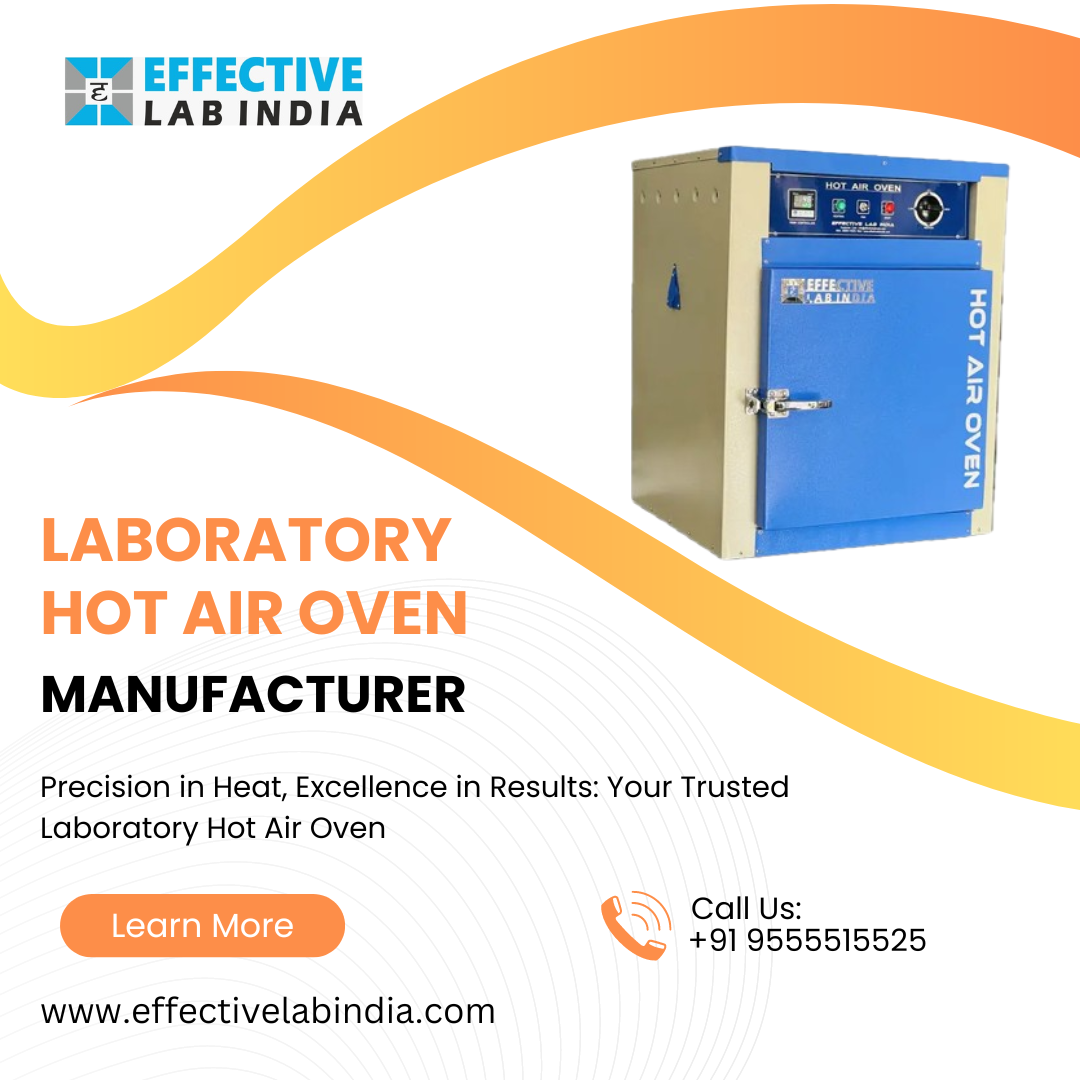It is a sterilization equipment which is used in different laboratories. It is used for destroying microorganisms and bacterial spores in laboratories. Also, it has applications in drying materials. A hot air oven is structured with a range of advanced features which circulate hot air around the sample.
Hence, it is an instrument which is used to heat the products at a specific temperature. It sterilizes the products in specific conditions such as pressure and humidity. By removing moisture from the products, it controls the level of humidity. It is used for sterilizing several products. Such as powder, materials, Petri dishes, glassware etc. The materials are sterilized in the Laboratory Hot Air Oven by incubating them for a few hours. It destroys the bacterial sopers and microorganisms present inside the materials. Hence, the material should be contamination-free.
Moreover, it is used for a range of products such as medical, food and pharmaceutical. You can check the full Hot air oven diagram in the image.

Hot air ovens used in microbiology.
In the field of microbiology, a hot air oven is widely used.
A Hot air oven in microbiology is used for the sterilization of lab equipment to make them free from contaminants in a microbiology lab.
The temperature in the hot air oven which is normally 160-180 degrees kills the bacteria and other microorganisms.
However, killing bacterial spores and microorganisms is an important step in maintaining a controlled environment in the lab.
What is the principle of hot air dry heat sterilization?
The Dry Heat Sterilization hot air oven principle involves exposing the item to high temperatures for specific hours. Heat is transferred to the objects via a hot air oven which causes the denaturation of proteins and destroying microbial structures. Hot air ovens work on the principle of convection, where heated air circulates uniformly throughout the chamber. A heating element, typically located at the bottom or around the chamber, generates heat, which is then distributed by a fan to ensure even temperature distribution.
This process kills the microorganisms and ensures sterilization.
It is a straightforward method but it is very effectively used in microbial laboratories.
Key Features and Specifications
Hot air ovens come in various sizes and configurations to cater to different needs. Some of the key hot air oven specifications include:
- Temperature Range: Although specialised models may provide larger ranges, Effective Lab hot air ovens typically have a temperature range of ambient to about 300°C.
- Temperature management: For a number of applications, accurate temperature management is essential. The majority of ovens include digital controls that allow for precise temperature adjustment and tracking.
- Chamber Size: The size of the Effective Lab India chamber varies based on the intended purpose; it can be as tiny as a tabletop unit or as large as a floor-standing device that can hold equipment or bulk samples.
- Construction Material: To endure high temperatures and offer simple cleaning and maintenance, ovens are frequently built from stainless steel or other sturdy materials.
- Safety Features: Features that prevent unintentional exposure to high temperatures include door interlocks, alerts for temperature deviations, and overheat prevention.
- Air movement: Even heating is ensured by effective air movement. For reliable results, look for models with forced convection or fans.
- Optional functions: Effective Lab India ovens are equipped with extra functions including data logging, adjustable temperature profiles, and inert gas injection for materials that are sensitive.
Applications in Various Industries
The versatility of hot air ovens makes them indispensable across various industries:
- Research Laboratories: Used for drying glassware, heating reagents, and conducting experiments.
- Pharmaceutical Industry: Essential for sterilizing equipment, dehydrating samples, and stability testing of drugs.
- Food Processing: Employed in the dehydration of food products, baking, and quality control processes.
In conclusion
In conclusion, the laboratory hot air oven is a vital tool for many different sectors and scientific study. One of the mainstays of laboratory operations, it offers accurate temperature control, efficient sterilisation, and consistent heating.
FAQ
- Are hot air ovens suitable for sterilizing liquids?
- Hot air ovens are not ideal for sterilizing liquids due to their dry heat method. Autoclaves or other methods involving moist heat are more suitable for liquid sterilization.
- What is the difference between a hot air oven and a drying oven?
- While both serve similar purposes, hot air ovens typically operate at higher temperatures and offer more precise temperature control compared to drying ovens.
- Can hot air ovens be used for cooking food?
- No, hot air ovens are specifically designed for laboratory and industrial applications and are not suitable for cooking food.
- How often should a hot air oven be calibrated?
- It is recommended to calibrate the temperature controls of a hot air oven at least once a year or more frequently depending on usage and industry regulations.
- Can hot air ovens be used for heat-sensitive materials?
- Yes, hot air ovens can be used for heat-sensitive materials as long as the temperature is controlled within the specified range to prevent damage.

